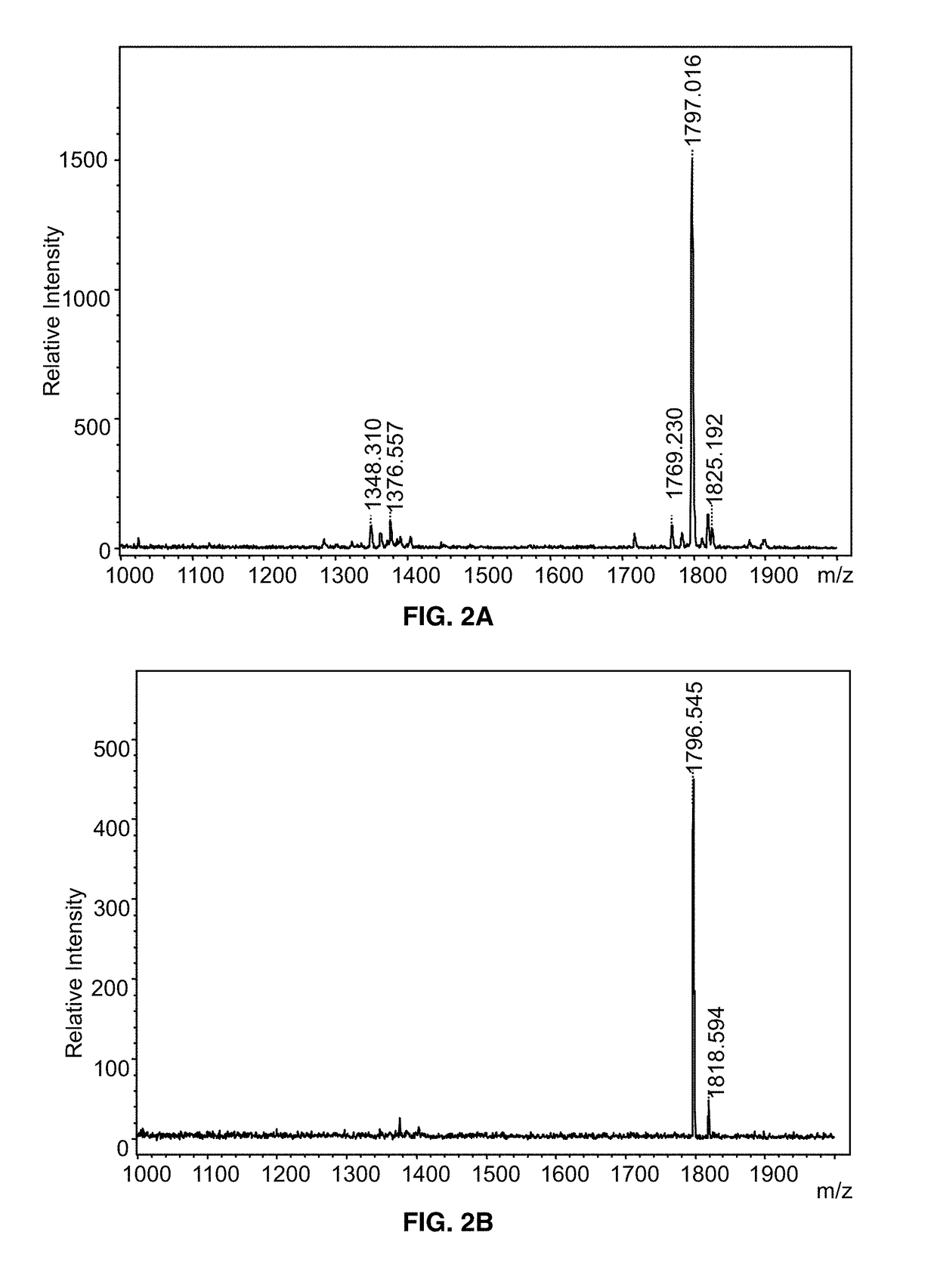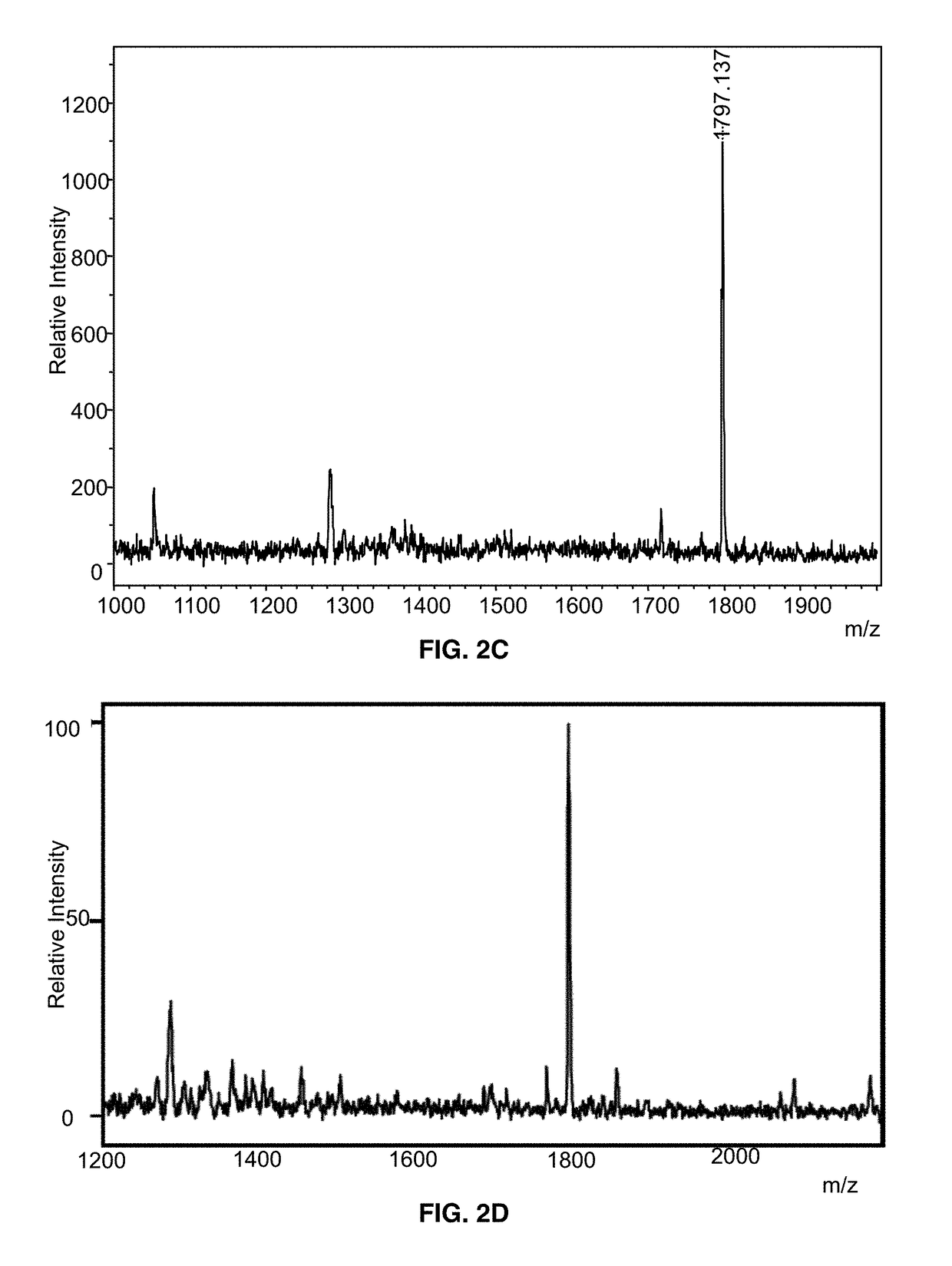Pathogen Identification in Complex Biological Fluids
a biological fluid and pathogen technology, applied in the field of pathogen identification in complex biological fluids, can solve the problems of critical failure, inability to differentiate closely related, and require significant tim
- Summary
- Abstract
- Description
- Claims
- Application Information
AI Technical Summary
Benefits of technology
Problems solved by technology
Method used
Image
Examples
example 1
Blood Culture Growth of Microorganisms and Micro-extraction of Lipid A, Lipoteichoic Acid, Glycolipids and / or Cardiolipin for Mass Spectrometry Analysis
[0046]Sterile blood is obtained from the University of Maryland Medical Center (UMMC) blood bank and is stored at 4° C. upon receipt. Commercial blood culture bottles are available for aerobic, anaerobic or slow-growing organisms or contain specialized additives for antibiotic neutralization or blood cell lysis. For purposes of performing the method, different blood cultures bottles can be used including, but not limited to, bottles manufactured by Becton Dickinson and Company (BD) and BioMerieux. Moreover, any of a variety of culture media used to support the growth of Gram-positive and Gram-negative bacteria, including aerobes and anaerobes, can be utilized in this method.
Preparation of 1M Ammonium Hydroxide Solution
[0047]Add 3.89 mL of 0.9 g / mL ammonium hydroxide to 96.1 mL endotoxin free H2O for 100 mL of 1M Ammonium hydroxide.
Pr...
example 2
Isolation of Microorganisms from Urine and Micro-Extraction of Lipid A and Lipoteichoic Acid for Mass Spectrometry Analysis
[0053]Urine specimens are obtained from the University of Pittsburgh Medical Center and processed immediately or stored at −20° C. upon receipt.
Preparation of 1M Ammonium Hydroxide Solution
[0054]Add 3.89 mL of 0.9 g / mL ammonium hydroxide to 96.1 mL of endotoxin free H2O for 100 mL of 1M Ammonium hydroxide.
Preparation of Urine Specimens (Day 1)
[0055]Transfer 5-10 mL of the specimen to a 15 mL conical tube and spin the tube at 4000 rpm for 10 minutes. This pellets the cells. Discard the supernatant. Pellets are frozen at −20° C. or are extracted immediately.
Ammonium Isobutyrate Extraction of Glycolipids (Day 1)
[0056]Thaw the pellet and resuspend the wet pellet with 400 μL of a 5:3, v / v, 70% isobutyric acid:1M ammonium hydroxide solution. Transfer to a 1.7 mL screw-cap tube (250 μL of isobutyric acid+150 μL Ammonium hydroxide). Incubate at 100° C. for 30-45 minutes...
example 3
Isolation of Microorganisms from Feces and Micro-Extraction of Lipid A and Lipoteichoic Acid for Mass Spectrometry Analysis
[0059]Murine fecal specimens are obtained from the lab of Dr. Hanping Feng at the University of Maryland, Baltimore and are processed immediately or are stored at −20° C. upon receipt.
Preparation of 1M Ammonium Hydroxide Solution
[0060]Add 3.89 mL of 0.9 g / mL ammonium hydroxide to 96.1 mL of endotoxin free H2O for 100 mL of 1M ammonium hydroxide.
Preparation of Fecal Specimens (Day 1)
[0061]Transfer the specimen to a 2 mL sterile microcentrifuge tube and suspend it in 1×PBS. Don't fill the tube past 1 mL of volume. Use a tissue grinder pestle to disrupt the feces and to generate a slurry and spin the tube at 1100 rpm for 10 minutes. This pellets fecal debris and human cells. Transfer the supernatant to a 1.7 mL screw-cap tube and spin the tube at 4000 rpm for 10 minutes. This pellets the bacterial cells. Discard the supernatant. Pellets are frozen at −20° C. or are...
PUM
 Login to View More
Login to View More Abstract
Description
Claims
Application Information
 Login to View More
Login to View More - R&D
- Intellectual Property
- Life Sciences
- Materials
- Tech Scout
- Unparalleled Data Quality
- Higher Quality Content
- 60% Fewer Hallucinations
Browse by: Latest US Patents, China's latest patents, Technical Efficacy Thesaurus, Application Domain, Technology Topic, Popular Technical Reports.
© 2025 PatSnap. All rights reserved.Legal|Privacy policy|Modern Slavery Act Transparency Statement|Sitemap|About US| Contact US: help@patsnap.com



